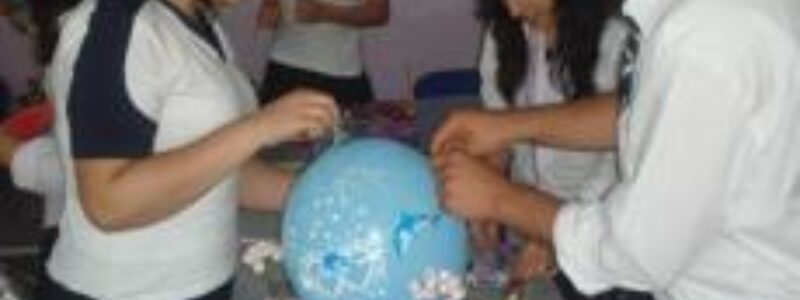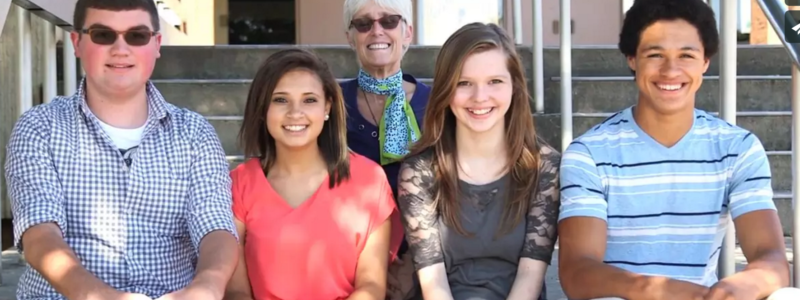Students Unlimited
Project Name: Students Unlimited
Age Level:
12-14 (Middle)
Subject Areas:
Social Studies
Summary: Students develop a public service announcement on a global issue. (COMMON CORE STATES STANDARDS ALIGNED)
Students Unlimited
This plan is for the Students Unlimited project
Content Area(s):
- Social Studies
Grade/Age Level(s):
- 7th grade, age 12
Teacher goals:
As an instructor I would like to learn how to 21st centurize a lesson so that instead of learning about a country we are learning with them. My content revolves around building digital citizenship along with extending grade level curriculum. I would like to have enough resources for collaborative work so that reaching out to our global community is a natural part of what we do.
Student goals:
Student goals include global participation in an authentic environment. Students will select relevant issues that are interest based as well as curriculum focused. Knowledge building will reflect understanding of cultures, communities, and demonstrate sensitivity to those who are different from us. Curricular objectives include global awareness, research, leadership and problem solving.
Curriculum Standards:
Common Core State Standards
- Reading 7: Integrate and evaluate content presented in diverse media and formats, including visually and quantitatively, as well as in words.
- Reading 8: Delineate and evaluate the argument and specific claims in a text, including the validity of the reasoning as well as the relevance and sufficiency of the evidence.
- Writing 3: Write narratives to develop real or imagined experiences or events using effective technique, well-chosen details, and well-structured event sequences.
- Writing 8: Gather relevant information from multiple print and digital sources, assess the credibility and accuracy of each source, and integrate the information while avoiding plagiarism.
- Speaking and Listening 1: Prepare for and participate effectively in a range of conversations and collaborations with diverse partners, building on others’ ideas and expressing their own clearly and persuasively.
- Speaking and Listening 4: Present information, findings, and supporting evidence such that listeners can follow the line of reasoning and the organization, development, and style are appropriate to task, purpose, and audience.
- Speaking and Listening 5: Make strategic use of digital media and visual displays of data to express information and enhance understanding of presentations.
Introduction
How will you present this project to your students?
As the introduction to this project we have been working on a unit entitled ‘Human and Environmental Interaction’. This entire unit has been dedicated to helping students recognize how local decisions can have global impacts.
How will you tie it into their curricular studies?
The chosen iEARN project will be a natural extension of our first unit. The difference will be that instead of learning about our impact on other countries we may have the opportunity to discuss the effects with those who are experiencing it.
How will you get them interested in the topic?
Typically, students this age, 12-13, have a limited ability to recognize issues that do not relate to them The first quarter will have been spent moving them from egocentric thinking to globalized thinking.
What background knowledge do your students bring to the project?
Student will bring an understanding about global issue such as their global footprint and the impact some of the choices we make as a society have around the world. They will have developed a public service announcement as a culminating project that informs about a global issue.
Productivity of work
Will your students need to do research for their project?
Students will need to have background information on the area and topic they are working with. They will research and become familiar with the region and use technology tools for research.
How will they be organized to gather information?
Organization will be flexible. Student teams will be flexibly grouped. Some may choose to work independently while others may choose to work in a team.
Who will be responsible and in charge?
As the classroom facilitator, I will be in charge of making sure instruction is clear and that students follow protocol when using technology. Students will be responsible for their participation in the program which will be monitored by me.
Conclusion of activity
When does your participation end?
I hope to participate in this project from January through May. There will be different student groups moving in and out of the project so I need to work out those details as we get closer.
How will the students draw their projects to a conclusion?
Students will document their collaborations and work so that it can be included in their portfolios. There may be a representation through writing, video, animations etc.
Identify technological and material requirements
Technological requirements
Students will be using computers, flip cameras, digital cameras, microphones, and various software to accomplish their goals.
Material requirement
Materials will include typical classroom tools enhanced by technology.
How will the appropriateness of student work be evaluated?
Student work will be monitored as they are progressing through the project. Anecdotal information will be gathered and students will complete personal evaluations. This allows them to reflect on what they have accomplished and what they can improve on.
How will you assess the student work?
Assessment will take the form of self, peer, and teacher evaluations. The introduction stage will be assessed by the planning students do before they engage in the project work. Their research must guide them as they work during the implementation stage and it must reflect their project objectives. The final work will also be a reflective process in which peer and teacher discussions will allow students to evaluate the process.






